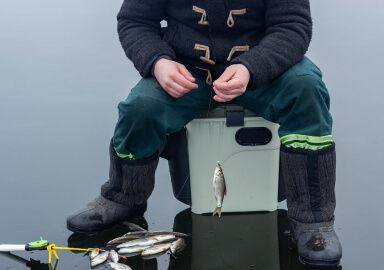Whitefish (Lake)
Lake whitefish are a locally popular freshwater fish that supports substantial commercial and recreational fisheries.
View 12 listings
12
listings
–
price starting from
4
countries
Where and When?
Alaska, Canada and the northern states of USA are the domain of the lake whitefish and they are found both in rivers and lakes including the Great Lakes. They have been introduced to many relatively cool water bodies in the northern USA outside their natural range. Juveniles mostly remain in shallower water, probably to escape large predators like trout and salmon, while larger specimens prefer deeper water where they usually remain fairly close to the bottom. While they do undertake large-scale migrations within their lake, mature fish generally prefer depths of 8-128 m. (26-420 ft.) and temperatures of 8-14 degrees Centigrade (47-57 degrees Fahrenheit).
Lake whitefish seem to prefer open water and flattish bottoms and rarely seek cover or structure. The species may be caught throughout the year but clearly ice fishing, which is probably the most popular way of catching them in most areas, is a winter activity. Light tackle fly or bait fishing is usually carried out in spring. Whitefish feed throughout the day but many anglers report that early morning is the best time to catch lake whitefish.
About Whitefish (Lake)
The lake whitefish (Coreogonus clupaeformis) is a member of the Salmonidae, the family that contains the trouts, chars and salmon, as is evident from the presence of the telltale adipose fin. The species name “clupaeformis” is Latin for “herring like” due to a resemblance in shape. Despite being a member of the salmon family, it has a relatively small, underhung, mouth. While it does eat small fish, it mostly consumes invertebrates such as worms, insects and their larvae, small mussels, shrimps and amphipod crustaceans. Many populations are quite separate and display different characteristics such as maximum size and colors with even some “dwarf” populations being reported.
The overall maximum size reported is 79 cm. (31 in.) and a mass of 6.8 kg. (15 lbs.) but most fish are smaller with the commonest size often being around 51 cm. (20 in.) and 1.8 kg. (4 lbs.). Color can vary by locality but a common regime is a dark brown or midnight blue back with silver sides. They are a coldwater fish and lake fish move from deeper to shallower water in spring, back to the deep in summer as the water warms and then the fish return to the shallows in fall then into the deep for winter. Spawning takes place in November and December in shallow water; the female rises to the surface, followed by several males, and then she sheds eggs that are fertilised by the males.
How to Catch?
There are two popular methods used by recreational anglers to catch lake whitefish. In spring there are often periods when insects, such as mayflies, hatch in massive numbers and whitefish join the fray to exploit this bounty. Anglers use light tackle spinning outfits or fly equipment to present small baits/flies to the feeding fish and excellent sport can be had. Casting out a float with a small hook baited with a trout egg, small bait or even a fly can work well. This spring fishing is most popular in rivers but suitable areas of lake shores can also provide good sport.
The alternative is ice fishing, which is mostly carried out in lakes or large rivers. Once the water is thickly and safely frozen a hole is cut and baits and lures may be dropped into the water. Quite a wide variety of equipment and baits may be used and, generally, heavy tackle is not required. One of the more popular methods is using a “jigging spoon” with or without several small hooks baited with worms or similar natural baits. The end result of lake whitefish fishing is, most often, an excellent meal for the family after a great day spent in the amazing outdoors, even in the middle of winter.







